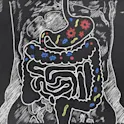
Health
08 Aug 2017
Exercise in early life has long-lasting benefits
Frontiers in Physiology study demonstrates that exercise in early life counteracts some of the damaging effects of a high-fat diet.

Health
08 Aug 2017
Frontiers in Physiology study demonstrates that exercise in early life counteracts some of the damaging effects of a high-fat diet.

Frontiers news
07 Aug 2017
New specialty section on Avian Physiology within Frontiers in Physiology. Pr. Colin G. Scanes is leading the section as Specialty Chief Editor.

Frontiers news
03 Mar 2017
Announcing the launch of Reproduction, a new Specialty section within Frontiers in Endocrinology and Frontiers in Physiology.

Life sciences
31 Jan 2017
This new research links living at high altitudes and the risk to initially healthy people developing all the criteria that make up the Metabolic Syndrome.

Health
22 Dec 2016
Extra vitamin D can restore good bacteria in the gut, according to a study in mice, giving hope in the fight against risk factors for diabetes and heart disease

Life sciences
03 Nov 2016
by Liam Drew, Frontiers Science Writer It was always thought that olfactory receptors’ sole bodily function was to smell, and could only be found inside a nose. But now a new study, published in Frontiers in Physiology, has found two olfactory receptors in human lung tissue. And when the researchers from Ruhr-University Bochum in Germany activated these receptors, they found that they regulated the way in which the airways smooth muscle cells contracted. Contraction of smooth muscle changes the size of our airways, suggesting that this research may open new avenues for treating chronic breathing disorders — such as asthma, emphysema and bronchitis — that constrict and obstruct the airways. No one had previously suspected that olfactory receptors would be present in airways past the nasal cavity. But working with human smooth muscle cells isolated and grown from the healthy parts of airway tissue surrounding excised tumors, Benjamin Kalbe and his colleagues applied a large number of odor molecules and watched two of them activate the muscle cells. Because it is well established which odors activate which receptors, Kalbe and team were able to probe tissue biopsies look for two specific receptors – OR1D2 and OR2AG1, finding found both of […]

Life sciences
22 Sep 2016
Contrary to popular belief, sex before sport doesn’t have a negative effect on the athlete and could even benefit performance. — By Tania Fitzgeorge-Balfour, science writer Over the course of the Rio Olympics, 450,000 condoms were distributed around the athlete’s village. This may be surprising considering the common view that abstinence from sexual activity can boost athletic performance. These long-standing views have now been challenged by a recent analysis of current scientific evidence, published in the open-access journal Frontiers in Physiology. “Abstaining from sexual activity before athletic competition is a controversial topic in the world of sport;” said Laura Stefani, an Assistant Professor of Sports Medicine at the University of Florence, Italy, and lead author of this review;”We show no robust scientific evidence to indicate that sexual activity has a negative effect upon athletic results.” The authors sifted through hundreds of studies with the potential to provide evidence, however big or small, on the impact of sexual activity upon sport performance. After setting a number of criteria to filter out the most reliable of these studies, only nine were included in the review. One of these found that the strength of female former athletes did not differ if they had sex the night before. Another actually […]

Health
12 Sep 2016
By Fabienne Eckert, Frontiers Science Writer Nitrate supplementation in conjunction with Sprint Interval Training in low oxygen conditions could enhance sport performance a study has found. Researchers from the University of Leuven in Belgium carried out a study with twenty-seven moderately trained participants. These were given nitrate supplements ahead of Sprint Interval Training (SIT), which took the form of short but intense cycling sessions three times a week. Nitrate is commonly found in diets rich in leafy green foods, like spinach and is important for the functioning of the human body, especially during exercising. To assess differences in performance in different conditions, the study included workouts in normal oxygen conditions and in hypoxia conditions, which are low oxygen levels such as those found in high altitudes. The observations published in Frontiers in Physiology were unexpected: after only five weeks, the muscle fiber composition changed with the enhanced nitrate intake when training in low oxygen conditions. “This is probably the first study to demonstrate that a simple nutritional supplementation strategy, i.e. oral nitrate intake, can impact on training-induced changes in muscle fiber composition;” stated Professor Peter Hespel from the Athletic Performance Center at the University of Leuven. For athletes participating in […]

Health
18 Aug 2016
— by Emily Barker, Frontiersin.org Just ten-weeks of exercise is nearly 100% effective at protecting the heart from potentially lethal changes in heart rhythms. Professor George Billman, Field Chief Editor of Frontiers in Physiology, works on preventing ventricular fibrillation, a very specific and potentially lethal change in cardiac rhythm, since 1980. In his current work, he has found that exercise could be the best non-pharmacological way to protect our hearts after sudden cardiac arrest. During ventricular fibrillation the heart does not beat in a coordinated fashion, instead it is a disorganized electrical event. “This is what you will see when they call a code blue and bring in a defibrillator to try to restore a cardiac rhythm,” he explained. The heart receives two sets of nerves, the sympathetic and the parasympathetic. A change in cardiac rhythms can be found when there is high sympathetic activity and low parasympathetic activity. To find the best way to protect the heart, Prof. Billman and his research team induced animals with a sudden cardiac arrest. They then put some of the animals on a ten week training program. About 95% of those who exercised were protected at the end of the program, whereas the sedentary animals got worse over time. […]

Frontiers news
09 Dec 2015
Frontiers in Physiology publishes its landmark 2000th article.

Impact analysis
03 Nov 2015
By Pascal Rocha da Silva, Frontiers analyst Frontiers in Physiology was launched in 2010. In just 4 years, it has become the second largest and the 4th most cited Physiology journal in the world. The impact factor (IF), defined as the total number of citations divided by the number of citable articles over a two-year period, is the gold standard of journal quality (not of an individual scientist). It was formally established by the Institute for Scientific Information (ISI) in 1975. As the IF can be heavily skewed by a few highly-cited papers, total citations generated over the same two-year period provide a more accurate measure of the overall influence or impact of the articles published by a journal in a field. Analysis within the category of Physiology There are 83 journals listed in the category of Physiology in the 2014 Journal Citations Reports (JCR) provided by Thomson Reuters in 2015. Frontiers in Physiology is one of the 10 Gold open-access journals. Below, the results of our comparative analysis on the article volume published, impact factor (IF) achieved, and the total number of citations accumulated in 2014 based on articles published over the two preceding years, 2012 and 2013. (Click here to see the volume and number of citations of other Frontiers journals). Comparison […]
Get the latest research updates, subscribe to our newsletter